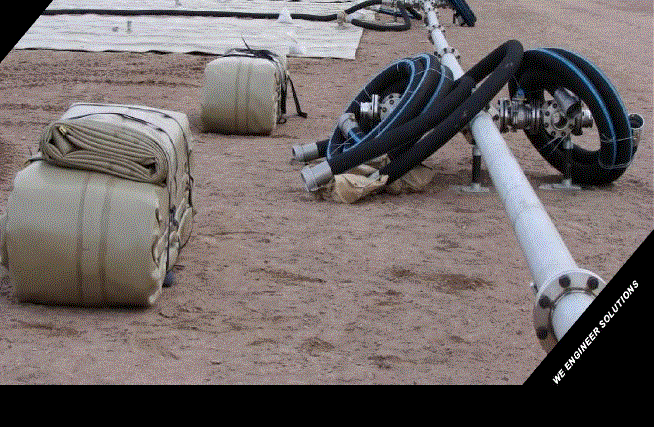Past, Present, and Future
Due to climate change concerns, there’s renewed interest and debate over the safety and importance of collapsible fuel tanks compared to traditional fuel storage options such as drums, barges and steel tanks. While collapsible fuel tanks have been used by the military for years to rapidly deploy fuel in remote sites during times of conflict, many civilian operators weren’t aware of their benefits until recently. When managed correctly, collapsible fuel tanks can be more environmentally-friendly than any other method of temporary storage.
Steel tanks, which require a much larger footprint, are heavy, difficult and expensive to move and, as a result, these tanks are often abandoned. When steel tanks are moved, they have the potential to cause significant damage to the environment due to their heavy weight.
The collapsible tanks due to their portable nature, offer lower costs associated with during transportation and can be rapidly decommissioned, hence encouraging proper disposal and minimal costs for companies faced with less or limited funding.
Past—High-Maintenance, Labor-Intensive
Collapsible fabric tanks have provided critical tactical bulk petroleum storage for military operations for over 50 years. Technological advances in materials and fabrication techniques led to the manufacture of larger and lighter fabric tanks made from thinner thermoplastic urethanes. The new technologies permitted the development, manufacture, and fielding of collapsible tanks with a capacity of 190 Cubic meter per collapsible tank as standard model size (1 Cubic meter = 1000 liter), with customizable capacity up to 500 Cubic meter per collapsible tank.
These tanks can be deployed rapidly and recovered using fewer personnel and less equipment. The success of the large-capacity collapsible tanks rendered the labor-intensive bolted steel tanks obsolete for use by Army inventory and the future for commercial sector.
Complete turnkey systems available including:
Primary storage tank with fill/drain connections
Manifolds
Secondary containment berm
Rainwater filter system
Fuel transfer, metering and filtration equipment

